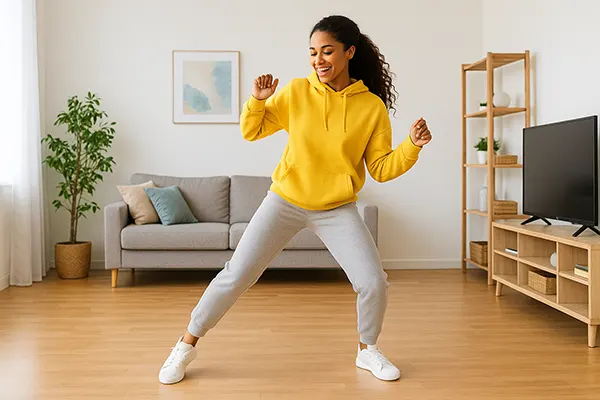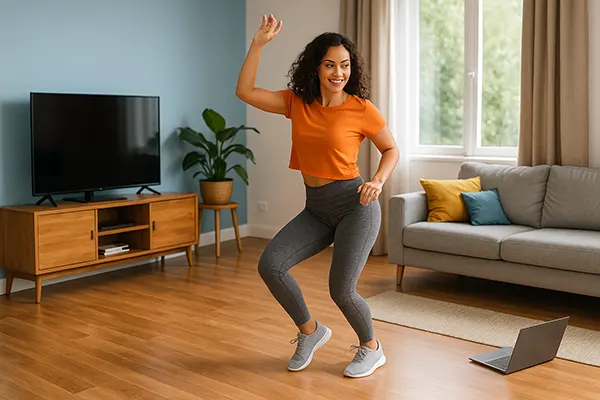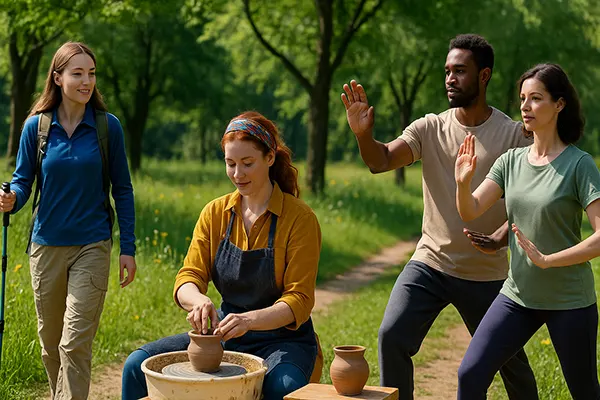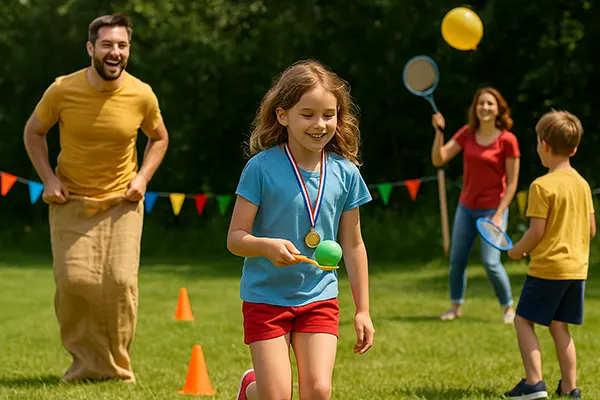Dance Workouts at Home: Combining Fitness with Today’s Most Popular Styles
Dance-based training at home has become a practical alternative to studio classes, especially for those who want structured exercise without the need for special equipment. Modern dance styles offer both enjoyable movement and measurable physical benefits, making them suitable for beginners and more experienced dancers alike. With the right space, warm-up routine and a consistent approach to tracking progress, home sessions can be as productive as traditional lessons.
Setting Up Your Home Space for Effective Dance Workouts
A well-prepared area helps reduce the risk of injury and lets you follow choreography more freely. Ideally, you need a flat floor with enough room to take a few steps forward and sideways without hitting furniture. Wooden or laminate flooring works best because it supports smooth turns without excessive impact on the joints.
Lighting is also important, especially if you follow online tutorials. Clear visibility helps you maintain posture and alignment while replicating movements accurately. If possible, position yourself so that light comes from in front of you rather than behind, preventing your reflection from becoming difficult to see.
To complement your practice space, consider using a large mirror or a device with a wide screen. This helps monitor your form and observe details such as hip placement, arm pathways and weight transfer. These elements influence your balance and help build cleaner execution across all styles.
Warm-Up Essentials for Safe and Comfortable Training
Each home session should begin with a gradual warm-up designed to raise the heart rate and activate major muscle groups. Gentle joint mobility movements for the neck, shoulders, hips and ankles help prepare the body for multidirectional footwork and rapid transitions often present in popular dance styles.
After mobility, add dynamic exercises such as leg swings, arm circles and light stepping variations. These actions improve circulation and prime muscles for more demanding choreography. A five-minute sequence is usually sufficient when practised consistently before every session.
It is equally important to finish the warm-up with short rhythm-based drills that match the style you intend to practise. For example, salsa foot taps, basic urban grooves or slow triple steps for swing help shift your focus towards timing and coordination, making the upcoming routine feel smoother from the start.
Salsa-Inspired Home Workouts
Salsa offers a combination of aerobic activity, fast foot patterns and expressive torso movement. At home, you can practise basic steps such as the forward-back pattern, side steps and simple turns without requiring more than a few square metres of space. These foundations already create a beneficial workout for the legs and the core.
Short practice sessions of ten to fifteen minutes can improve rhythm awareness and help build endurance. Many instructors release free online combinations that introduce classic elements like shines, body rolls and cross-body leads in adapted versions suitable for home use. This makes the style accessible even to those without a partner.
Music selection plays a crucial role in keeping motivation high. Tracks with clear percussion and mid-tempo beats (around 150–200 BPM) help maintain steady movement. Creating a playlist dedicated to your preferred salsa flavour ensures smoother transitions between exercises and supports consistent practice sessions.
Salsa Practice Tips and Progress Tracking
To measure improvement, focus on the precision of foot placement, smoother weight shifts and better control of upper-body movement. Filming short parts of your training once a week allows you to compare posture, timing and the flow of transitions over time. Even subtle changes indicate that your coordination is developing.
It is also helpful to revisit older combinations every few sessions. If previously challenging patterns now feel more natural, this signals growth in confidence and technical understanding. You may gradually increase the tempo or attempt slightly more complex routines.
Consistency remains the most important factor. Even if your sessions are short, practising several times a week helps maintain rhythm awareness and develops muscle memory. This structured approach gives salsa workouts a strong fitness component while also enhancing dance quality.

Urban Dance and Hip-Hop-Based Home Sessions
Urban dance styles incorporate grooves, isolations and energetic sequences that contribute to cardiovascular activity and full-body strength. Practising at home usually involves repeating foundational movements such as bounce, rock, slides and simple footwork patterns before exploring more detailed choreography.
This style is particularly adaptable to home environments because many routines are taught in compact formats designed for online learning. You can select combinations that match your skill level and gradually increase complexity as you become more comfortable with timing and flow. Strong emphasis on musicality makes each workout dynamic and engaging.
Unlike structured ballroom-based genres, urban dance encourages personal expression, allowing you to adjust movements to your own physical comfort. This flexibility helps beginners stay motivated while still receiving genuine physical benefits, including improved stamina and stronger lower-body engagement.
Building Skill and Routine Structure in Urban Dance
Begin each session with foundational grooves to support better body control. These repetitive movements create a steady pulse and prepare you for more detailed sequences. They also help with stability, especially during quick transitions or directional changes.
To maintain progress, introduce short choreography segments and repeat them regularly at different tempos. Slower practice highlights technique, while faster repetitions improve stamina. This dual approach ensures balanced skill development and leads to more confident execution over time.
Music choice can shape the overall atmosphere of your training. Mid-tempo hip-hop, R&B or funk tracks work well for beginners because they provide clear rhythms suitable for timing practice. Curating a playlist that suits your style encourages regular sessions and supports long-term consistency.




